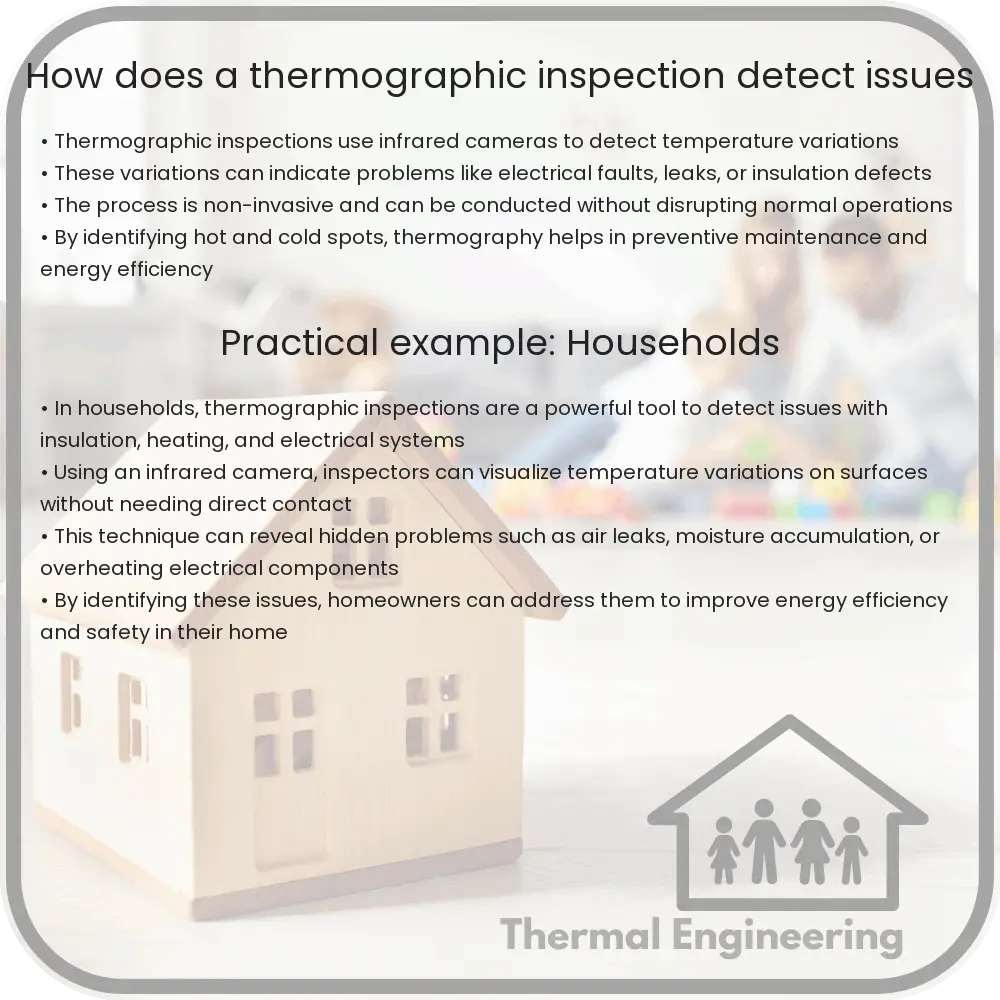Learn how thermographic inspections use infrared technology to identify issues in electrical systems, mechanical components, and building structures.

Understanding Thermographic Inspections
Thermographic inspections, also known as infrared inspections, are a powerful diagnostic tool in various engineering fields ranging from electrical maintenance to building construction. The technique hinges on detecting and measuring the infrared radiation emitted from an object’s surface to visualize the thermal performance and identify potential issues.
How Thermographic Inspections Work
The basic principle behind thermography is that every object at temperatures above absolute zero emits infrared radiation as a function of its temperature. This form of radiation, invisible to the human eye, can be detected and measured by infrared cameras. These cameras convert the radiated energy into a visible heat map called a thermogram, which depicts the temperature variations across the surface of the object.
Key Components of a Thermographic Camera
- Infrared Detector: Sensitive to infrared radiation, the detector captures the radiated energy from the target object.
- Optics: Focuses the incoming infrared radiation onto the detector.
- Display: Converts the data from the detector into a digital image that colors different temperatures in varying colors, often ranging from white for hot areas to black for cooler areas.
Applications of Thermographic Inspections
Thermographic inspections are widely used across numerous engineering disciplines:
- Electrical Systems: Locating overheating joints and parts of electrical circuits which may indicate potential failure points.
- Mechanical Systems: Identifying overheated motors or other components which could fail and cause operational disruptions.
- Building Envelopes: Detecting thermal inefficiencies such as heat leaks in doors, windows, or other structural components.
- Fluid Systems: Visualizing blockages or leaks by noting areas where the temperature abruptly changes.
Benefits of Thermographic Inspections
Thermographic inspections offer several fundamental advantages:
- Non-contact and Non-destructive: The method does not require physical contact with the object, thus there is no risk of damaging it during inspection.
- Identify problems early: Allows for early detection of abnormalities before they can evolve into serious faults, thus preventing costly repairs and downtime.
- Comprehensive overview: Provides a comprehensive overview of an object or area, making it easier to pinpoint exactly where problems are located.
Limitations of Thermographic Inspections
While highly effective, thermography has some limitations:
- Surface Emissivity: Accuracy depends on an object’s surface emissivity; very shiny surfaces can reflect ambient radiation, distorting the temperatures seen by the camera.
- Requires Expert Analysis: The interpretation of thermograms requires skilled technicians trained in thermography to avoid false readings or missed data.
- Environmental Conditions: External conditions like sunlight, wind, or rain can impact the accuracy of thermal images.
Despite these limitations, thermographic inspection remains a vital tool in preventive maintenance and quality assurance practices in many fields of engineering. The ability to preemptively address potential issues before they lead to system failures is invaluable, underscoring thermography’s integral role in modern engineering diagnostics.